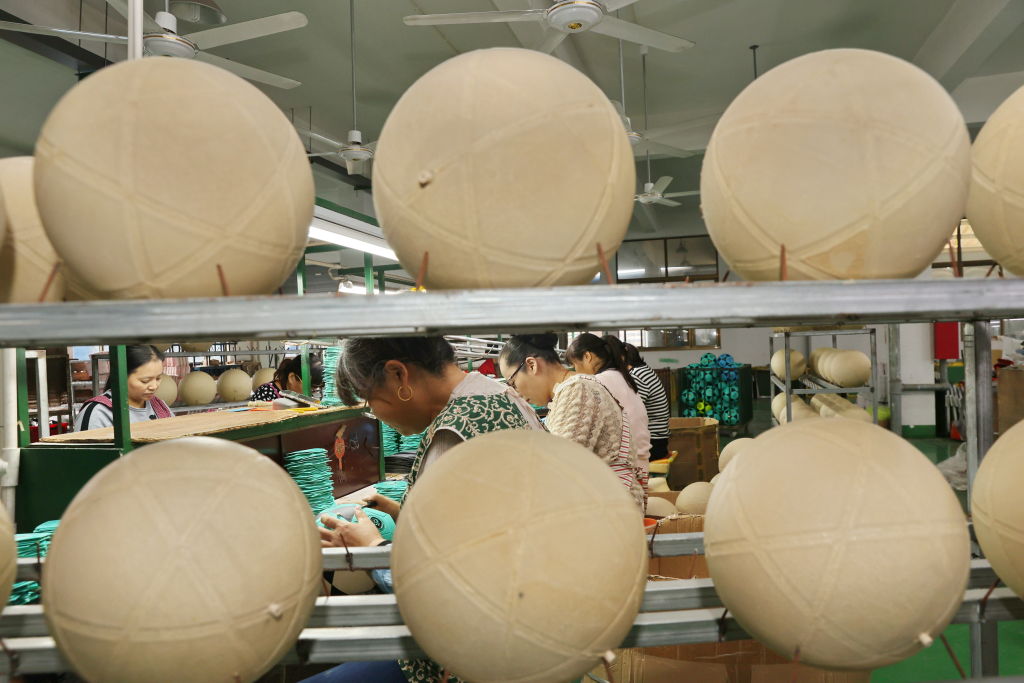Off the pitch, pay parity is a hot topic in women’s soccer.
England’s Lionesses have paused discussions over performance-related bonuses until the Women’s World Cup, which kicked off last month, is over. In South Africa, the entire squad withdrew from their final warm-up match in protest over unequal pay. Days before the tournament began, members of Australia’s team, one of this year’s hosts, released a video criticizing the gender gap in prize-money earnings.
Thousands of miles away, in Bangladesh, women stitching official merchandise for the World Cup face problems of their own. Last year, Equidem, a UK-based human rights organization, spoke to women working in garment factories that sourced for the men’s World Cup in Qatar. They earned below living wages, were forced into unpaid overtime and threatened with job loss when pregnant, among other issues.
Equidem is investigating similar concerns in the garment supply chain for the Women’s World Cup and will publish its findings later this year.
“There is this real emphasis on making sure there’s pay parity for the star players of the Women’s World Cup, [and] promoting the women’s game on equal footing, which is really great,” said Mustafa Qadri, Equidem’s executive director. “But there’s all these people that are away from the cameras and without them, these tournaments are not possible.”
This summer, FIFA — soccer’s governing body and the organizer of the Women’s World Cup — increased the women’s tournament prize money to $110 million, up from just $30 million four years ago (and zero twenty years ago). An improvement, but still far below the $440 million awarded at the men’s World Cup last year. Four times lower, in fact.
With FIFA president Gianni Infantino setting a goal of equal prize money for the men’s and women’s tournaments by 2027, some players are optimistic about their fight for improved working conditions.
“It’s the biggest women’s sporting event in the world. This is a real opportunity,” U.S. soccer star Megan Rapinoe told the Los Angeles Times last month. “It feels like this is a paradigm shift or a moment we’ll look back to and say: ‘Nothing was ever the same after this Women’s World Cup.’
Yet Equidem’s findings fit a pattern of abuse and exploitation uncovered in other FIFA contracts and supply chains by the organization as well as in the wider media. While the plight of the tens of thousands of men who helped build Qatar’s World Cup dream was widely documented in the lead up to the tournament last year, I also reported on the less-known issues facing migrant women working in Qatar’s hotels, including sexual harassment and verbal abuse.
“When it comes to other aspects of [FIFA’s] business operation — the kind of grass they grow on their fields and the kinds of balls they use — they’re very precise and those are very complex supply chains, too,” said Qadri. “It doesn’t seem to be about capacity, it’s about will.”
On the field, players are watching their hard-fought battles slowly gain traction. After a six-year fight, the U.S. women’s national team, who were the favorites to win this year’s tournament before their exit in a dramatic penalty shootout, will now be paid the same rate for games and tournament victories as the men’s team. Both male and female players will also share World Cup prize money equally – an unprecedented move in soccer history.
Globally, at least a third of the teams in the Women’s World Cup are in disputes with the soccer governing institutions in their countries over pay, working conditions or mismanagement.
With this tournament the largest in history, and expected to set record viewership figures worldwide, women are using the moment to spotlight their concerns — for themselves and those following in their footsteps. But as FIFA continues to voice its support for women World Cup players, it should be doing the same for those in its supply chain, said Qadri.
“FIFA has this leverage that’s very unique…it needs to use it.”



